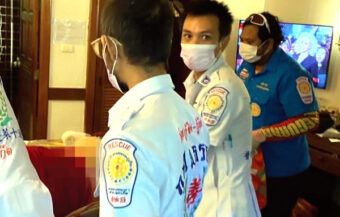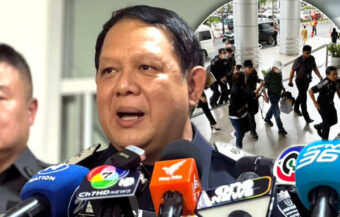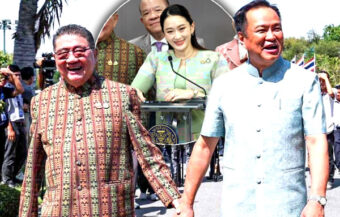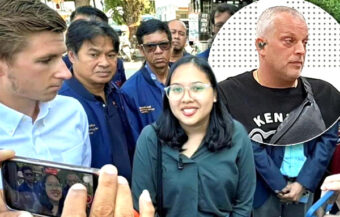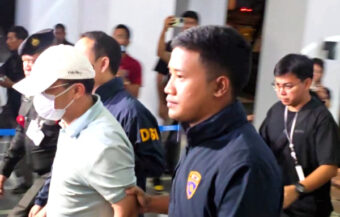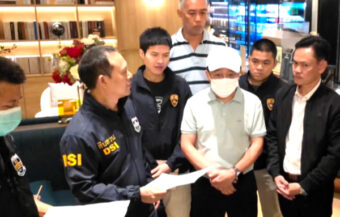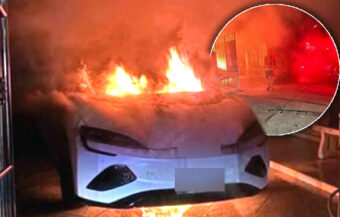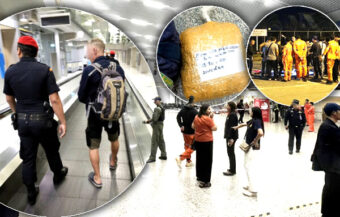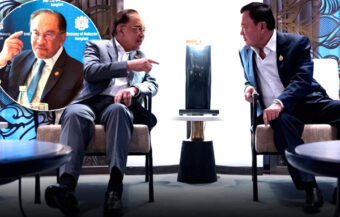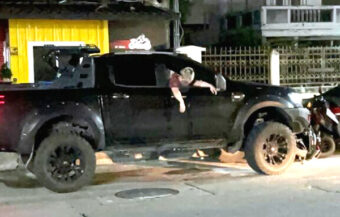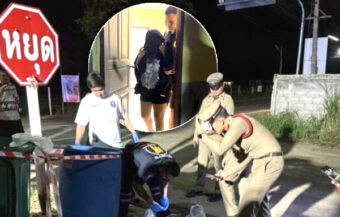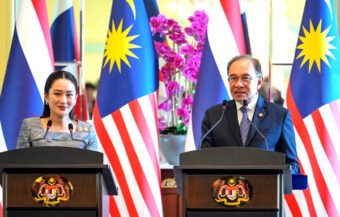Thai police uncover a huge drug haul worth ฿100 million hidden in three giant Buddha statues smuggled across the Laos border. The operation, which exposed international trafficking methods, resulted in heroin and meth hidden in hidden compartments.
A Thai military task force and police investigators foiled an imaginatively concealed international shipment of heroin and crystal meth on Monday. The operation was conducted in Nakhon Phanom province. Three massive Buddha statues, each 2 metres in height, were found in a cemetery in the Tha Uthen District of the province, which stretches along the border with Laos. Later, police revealed that the shipment was bound for international markets, with a value of approximately ฿100 million.
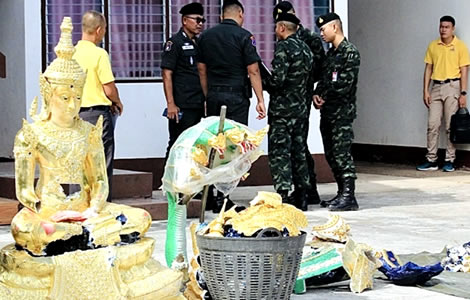
The statues were found in a cemetery at Ban Don Daeng Noi, Village No. 15, Tha Champa Subdistrict, Tha Uthen District. Acting on a tip-off, officials from the 237th Border Patrol Police Company conducted patrols in the area.
The patrol, led by Police Lieutenant Colonel Rewat Champa, focused on identifying suspicious activities.
Three large Buddha statues found discarded by the roadside revealed to hide heroin and cystal meth
In short, the statues, discarded by the roadside, quickly caught the officers’ attention. Each depicted a meditating Buddha in a Naga Prok posture, appearing to be traditional religious artefacts.
Besides, the statues were large, measuring 1.5 metres across the lap and 2 metres in height. Crafted in gold, emerald, and black finishes, they were particularly elaborate in appearance.
Golden Triangle drugs threat aired in parliament, claims of senior police officers being involved in trafficking
Wanted Australian linked to the drug trade nabbed by Immigration Bureau in Pattaya for deportation
Thailand and China work at closer quarters tackling illicit drugs. Justice Minister visits Beijing for talks
However, officers noticed visible damage to the statues’ bases. The damage suggested they had been hastily unloaded and thrown from a vehicle. Upon closer inspection, investigators discovered that the statues were made of resin and contained hidden compartments. These compartments had been meticulously designed to transport illegal drugs.
Drug haul of heroin and crystal meth found concealed within the statues, with a total value of over ฿100 million
Later, inside the statues, police found 32 bars of heroin, each weighing 400 grams. The total heroin haul was 12 kilograms.
Each bar was stamped with a logo of two lions and a globe, a mark linked to transnational drug cartels. In addition to heroin, investigators uncovered 117 kilograms of crystal methamphetamine hidden within the statues.
The meth was packed in Chinese tea bags, an increasingly common method for drug concealment.
The tea bags came in three varieties: green with five stars above the number 6, light green bearing the name Guanyinwang, and red.
Each package weighed one kilogram. Authorities estimate the combined value of the drugs exceeded ฿100 million.
Evidence at the scene suggested the statues had been transported from neighbouring Laos into Thailand.
Sand consistent with the Mekong River was found at the statues’ bases, reinforcing the belief they arrived via maritime routes. Plastic bags with Lao text were also discovered inside the compartments.
Smuggling operation showed traffickers taking creative measures to hide drugs within the statutes’ design
The traffickers had gone to great lengths to disguise their shipment.
The drugs were not merely hidden in the statues’ bases but embedded throughout their structures. Copying paper was also used inside the compartments, likely to evade detection by X-ray or drug scanners.
The discovery followed extensive patrols previously by border security personnel. At this time, Police are satisfied the traffickers abandoned the statues. This came following pressure from increased law enforcement activity in the area.
The tip-off, which prompted enhanced surveillance, likely forced the smugglers to discard their cargo to avoid capture. In short, they got wind of the intelligence breach at their end.
Nothwithstanding, this is the first significant interception of Buddha statues used for drug trafficking in several years. Afterwards security officials described the method as both daring and innovative.
The traffickers exploited the cultural and religious significance of Buddha statues, likely hoping this would deter closer scrutiny.
Authorities suspect international drug syndicates behind the use of Buddha statues as smuggling vehicles
Investigators believe the drugs were destined for international markets where narcotics fetch higher prices.
Lieutenant Colonel Rewat Champa emphasized the importance of the tip-off in uncovering and foiling the drug smuggling operation. He revealed the timely information allowed officers to heighten patrols. In short, they were determined to prevent the drugs from reaching their destination.
Nakhon Phanom province, with its long border with Laos along the Mekong River, remains a critical area for drug smuggling.
Undeniably, its geographical location and river access make it a favoured route for traffickers. Authorities are now investigating the origins and intended destination of the statues and their illicit contents.
Ongoing investigation seeks to identify international network behind this drug trafficking operation
They are working to identify members of the smuggling network involved in the operation. Preliminary findings suggest the network operates across borders. In addition, it has both personnel and bases in Thailand.
Undoubtedly, it is one with powerful local and international connections. The seizure has put police and security agencies on guard. It highlights the creative and audacious tactics employed by drug trafficking cartels.
Furthermore, the use of Buddha statues to hide narcotics reflects no compunction whatsoever about exploiting revered religious artefacts for illegal purposes.
Unquestionably, the damage to the statues suggests, according to police, the traffickers knew the consignment was doomed. In effect, they speedily dumped the statues despite the elaborate deception.
Meanwhile, the heroin and methamphetamine haul, worth over ฿100 million, demonstrates the immense scale of drug trafficking in the region.
Authorities continue to intensify efforts to monitor key smuggling routes and intercept illicit goods. Of course, it is also a timely reminder that Thailand remains a major transit point for the international drug trade.
Join the Thai News forum, follow Thai Examiner on Facebook here
Receive all our stories as they come out on Telegram here
Follow Thai Examiner here
Further reading:
Shock police probe into drug dealing and money laundering linked with Myanmar to strain ties
Recreational use of pot to be recriminalised as Minister warns abuses are undermining his plan
Marijuana revolution and overdoses raise concern with calls for action to outlaw recreational use
One of the biggest drug dealers in the South flees home as Thai police and army move against him

